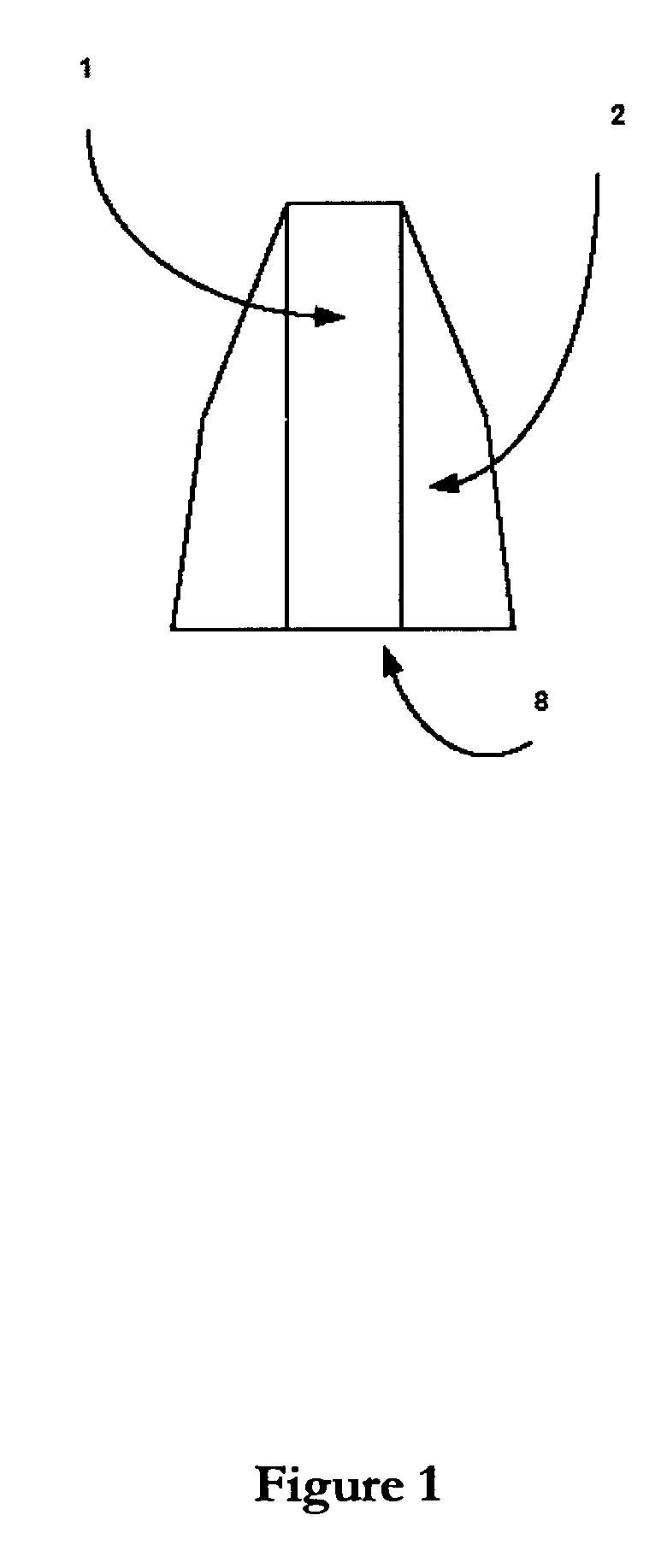Rotary electromagnetic machines
a technology of electromagnetic machines and rotating shafts, which is applied in the direction of dc commutators, ac commutators, electrical equipment, etc., can solve the problems of dangerous handling during the construction process of motors, practicable limitation of surface area, etc., and achieve the effect of increasing the reliability of motors or generators, and reducing the size and weight of such machines
- Summary
- Abstract
- Description
- Claims
- Application Information
AI Technical Summary
Benefits of technology
Problems solved by technology
Method used
Image
Examples
Embodiment Construction
[0047]FIG. 1 schematically illustrates how magnets 1 are fitted between tapered pole pieces 2, so as to concentrate the flux and redirect it radially outwards via conducting laminations. It will be understood that the outer surfaces 8 of the magnet and polepieces (here shown flat) can be curved to conform to the bounding cylinder of the armature.
[0048]FIG. 2 shows how the force units of FIG. 1 may be abutted to encircle a torque tube (not shown). It will be understood that the taper angle of the pole piece is matched to the number of force units around the torque tube. Again, the outer facet edges 8 of the polepieces 2 and magnets 1 can also be curved to match the bounding cylinder of the armature.
[0049]FIG. 3 shows an axial section of the armature, indicating how the magnets 1 are abutted along the length of each pole piece 2. Every force unit experiences a strong magnetostatic force radially outwards across the air gap and it is therefore necessary for the complete assembly to be ...
PUM
 Login to View More
Login to View More Abstract
Description
Claims
Application Information
 Login to View More
Login to View More - R&D
- Intellectual Property
- Life Sciences
- Materials
- Tech Scout
- Unparalleled Data Quality
- Higher Quality Content
- 60% Fewer Hallucinations
Browse by: Latest US Patents, China's latest patents, Technical Efficacy Thesaurus, Application Domain, Technology Topic, Popular Technical Reports.
© 2025 PatSnap. All rights reserved.Legal|Privacy policy|Modern Slavery Act Transparency Statement|Sitemap|About US| Contact US: help@patsnap.com



